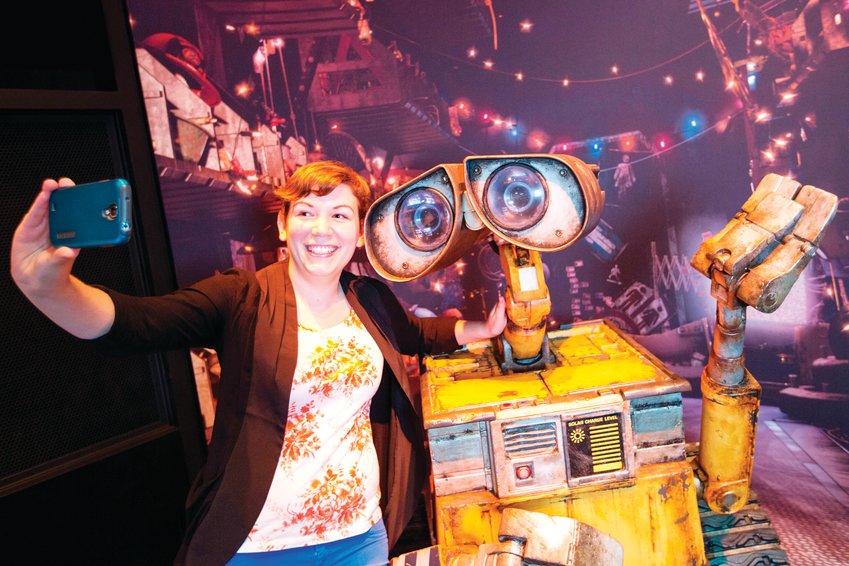Denver and the surrounding suburbs have spent the better part of this century becoming some of the most desirable places to live in the country. The influx of new residents has brought with it all manner of changes, but one that may not be immediately noticeable is how local cultural hotspots cater to this dynamic audience.
“Denver is a fresh, entrepreneurial and growing community, and I have found our audiences to embody these qualities,” said Heather Nielson, director of learning and engagement at the Denver Art Museum. “They expect high quality. They are courageous and adventurous, and welcome exhibition projects that are experimental and innovative. They want projects that reflect their communities.”
Denver’s museums are using technology, community outreach and innovative, multi-sensory approaches to draw in new audiences and increase repeat visits from residents. In the process, they’re changing the standard for what a “typical” museum exhibit can look like.
“To a certain extent, places like zoos and aquarium generally experience higher attendance. Art museums started looking at this and asked, ‘Why not us?’” said Dean Sobel, director of the Clyfford Still Museum. “Art museums are starting to have a lot of fun in coming up with new ways to set up an exhibit.”
One of the Clyfford Still Museum’s latest exhibits, “Still: Elemental,” exemplifies this burgeoning approach. It makes use of a relatively low-tech video projection, incorporates a sensory feature by encouraging visitors to smell actual dirt in the earth element portion, and uses noise-cancelling headphones in the last gallery.
“There’s something really interesting about closing out one of our senses, and how it heightens our other senses,” Sobel explained. “It becomes a deeper experience by making the last gallery a non-social experience.”
In recent years, the Denver Art Museum has been giving extra attention to the story of an exhibit. Rather than seeing exhibits as static spaces with general themes and organization, the aim of the museum is to give them a narrative arc, with elements of an introduction, characters or ideas visitors can connect with, and a conclusion, Nielson said.
“We spend a lot of time thinking about the entry points for visitors. For some that is through the artists’ perspective and voice, to show the power of creativity and unique approaches to art making,” she said. “Over the last several years, design has become important in our telling of each exhibition’s story. We have experimented with immersive audio and video elements on certain projects to transport our visitors to a different time and place.”
Much like the Denver Art Museum, with its Dior and Monet exhibits, the Denver Museum of Nature & Science has hosted some well-known exhibitions like the Dead Sea Scrolls and, currently, “The Science Behind Pixar.” It’s extremely important that a Denver touch is added to all these national exhibits, so community residents get a unique experience when they visit.
“For the Dead Sea Scrolls, we invited different faith leaders to come together to explore what meaning the scrolls might have for their faith,” said Jodi Schoemer, director of exhibits at the DMNS. “We’re using the magic of Pixar — and its tremendously fascinating use of STEAM subjects — as a glorious opportunity to talk with different educators and groups committed to STEAM. We want the exhibition to complement the work done in the community.”
Most museums are placing a lot of focus on multigenerational appeal, and especially with young people, technology and interactivity come into play. “The Science Behind Pixar” exhibit is brimming with computers and tablets, allowing visitors of all ages to play around with crucial elements of their favorite Pixar films — everything from lightning and scale to movement and texturing.
As the Denver area’s populations grows and diversifies, museums rely on feedback from guests to get a sense of what people are expecting and hoping for. This feedback is gathered through surveys, focus groups and community advisory committees, with the additional aim of advising in the marketing of the exhibition. Among the results of such feedback so far, many museums are offering increased bilingual exhibitions and programs.
All these efforts will increase in 2020 and beyond. Sanya Andersen-Vie, director of marketing and communications at the Clyfford Still Museum, said the museum is looking to host multi-sensory tours, which will incorporate scent, sound and touch. The Denver Art Museum is committed to providing young people a way to connect to art through games, interactive scavenger hunts and more. And the DMNS wants to try new things like having reenactors in exhibits and at speaking events, and hosting guided camping trips during the summer.
“The goal is to offer a selection of exhibits about which anybody in community will say, ‘That appeals to me. I can see myself there,’” Schoemer said. “We want people’s curiosity to be triggered and give them a chance to feel inspired.”
Source: Museums turn toward tech, innovation | Wheatridgetranscript.com













